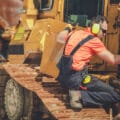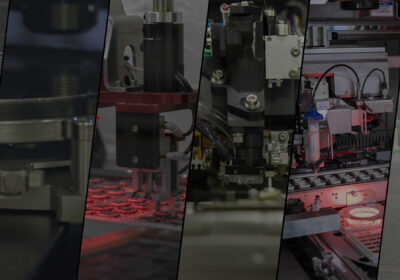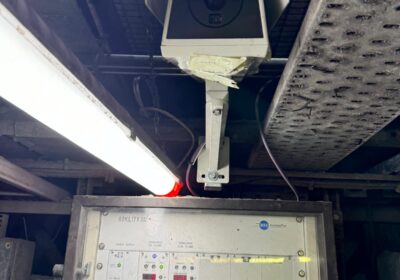According to HSE’s annual health and safety report, during the 2021/22 financial year, 565,000 workers experienced non-fatal injuries at their workplace in Britain. And while fatal accidents decreased to only 123, the construction industry saw the highest number at 30.
Construction sites will always have hazards that can cause injuries, but it’s important to identify these hazards to prevent downtime from impacting your sites’ productivity and the overall budget. Paul Taylor from FPE Seals, a leading supplier of hydraulic cylinder parts, has offered insight into the most hazardous safety concerns on construction sites and how to make them safer, particularly with implementing a technological and digital approach.
Slips and falls – heights, trip hazards, and more…
When on construction sites, workers experience a variety of environments, all in differing states of disrepair. As a result, slips and falls are incredibly common in day-to-day operations. In fact, HSE found that in 2021/22, they accounted for as much as 30% of all non-fatal injuries within the construction sector.
The site’s terrain can be hugely impacted by the work being done, leaving holes and hazards along the ground. Regular assessments of the environment are crucial to reducing the number of injuries that occur through falling. Once hazards have been identified, making them visible to your workers so they can avoid them is an essential step for a safer workplace.
The use of technology and digital can help improve safety within the construction environment. First, being able to produce risk assessments that can accessed to everyone digitally can help create awareness of the potential hazards located onsite as well as methods and tips to avoid the issues affecting the workers. Alongside that, managers and supervisors can utilise technology to report and gain greater visibility of their safety performance and safety compliance from anywhere.
It’s not just at ground level where injuries happen, as construction workforces are frequently tasked with working at heights, which can result in falls that can have some extreme consequences. Out of 40 people who suffered fatal injuries after falling from heights in 2023, 24 worked in the construction industry.
Labourers who may have to work at heights during projects should have the appropriate training and protective equipment to do their jobs safely. This training should include how to identify potential fall risks, the distance workers should maintain to stay safe, and equipment like harnesses if they must work at excessively dangerous heights. Businesses can also invest in the likes of drones that can utilised to access hard to reach places to have better visibility of problems for more appropriate planning for the labourers, being aware of the risks before working at the height.

Noise, asbestos, and shrapnel – appropriate protection equipment
The hazards on sites that can affect your physical health aren’t just down to human error, as there are many risks that are part of the job. Many projects involve breaking down existing buildings and structures, and not only can you be at risk of shrapnel falling or hitting your workers, but also of dangerous materials used to build them. There are synergies being formed such as the likes of HS2 and Euston who have tested smart ear defenders that can be utilised on construction sites to not only protects workers from noise but also gather data on the noise levels around the site, essentially allowing site managers to map out areas of noise that can then be used to target these areas to product everybody’s hearing across the construction site.
Asbestos is still a massive concern for labourers, with HSE estimating that as many as 400,000 buildings in the UK contain asbestos and contribute to 20% of all occupational lung diseases that workers sustained up to 2021.
Noise levels on project sites can also be dangerous over time, particularly with the required equipment and machinery. HSE estimated that 11,000 workers developed hearing problems in their working environment between 2019 and 2022.
Appropriate personal protective equipment (PPE) is crucial to keeping your workers safe from physical hazards. Before each project begins, risk assessments should include these hazards and the PPE they’ll require, which may include hard hats and effective ear protectors.
Repeated use of equipment – MSD and HAVS
Construction operations require the daily use of specialist equipment that needs to be manually moved around the site. This equipment can have a long-lasting effect on the workers tasked with using it, especially if they’re older models or are poorly maintained.
Power tools that are vibratory, like hammer drills, chainsaws, concrete breaks, and grinders, can lead to hand-arm vibration syndrome (HAVS) through repeated use. This manifests as pain in the blood vessels, joints, and nerves in the fingers, hands, and arms of workers, making it more difficult to produce quality work and can even reduce grip strength.
In fact, musculoskeletal disorders (MSDs) are common long-term injuries that can be gained within the industry. 40,000 builders are estimated to have injuries sustained to their muscles, joints, and nerves because of repeated stress and strain that occurs through the physical labour of the job.
The most effective way to reduce construction-related injuries is through comprehensive training on equipment and movements required for each role. This would work in tandem with each worker being given the appropriate amount of breaks to ensure the duration they’re spending won’t contribute to the stress their bodies are put under. Construction businesses can consider investing in artificial intelligence (AI) and wearable technology devices which can be utilised onsite to reduce the risk of MSD, it’s proven revolutionary in the US and even transforming health and safety policy and practices that the UK is starting to take mimic.
Sources







